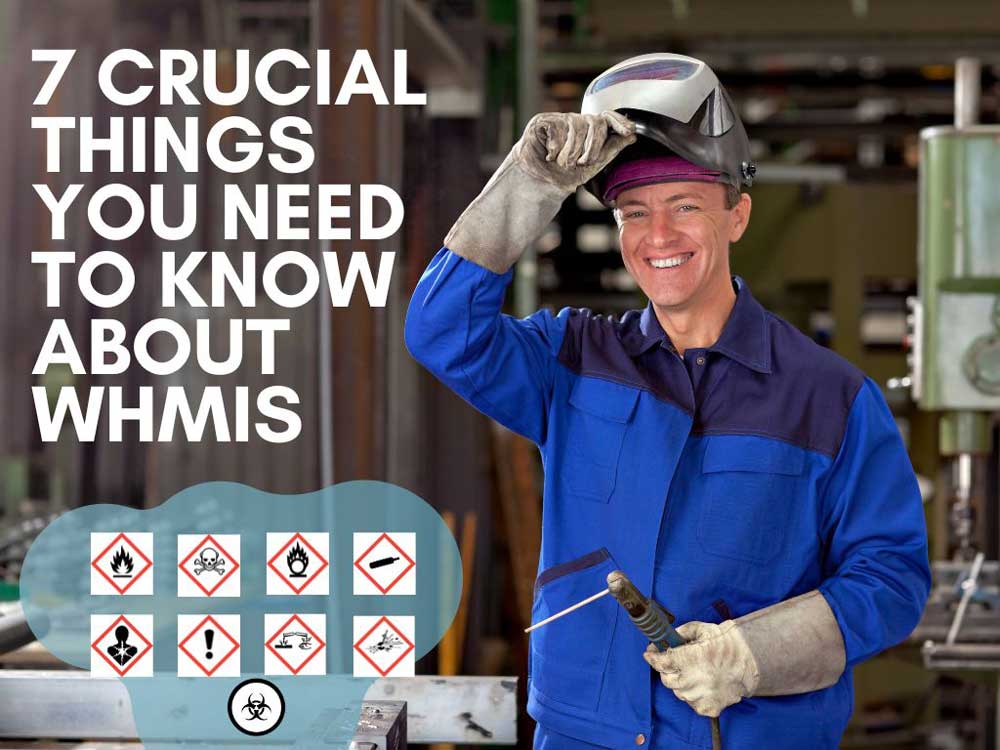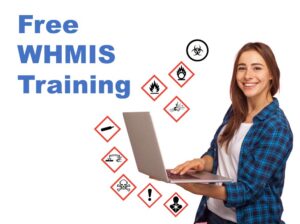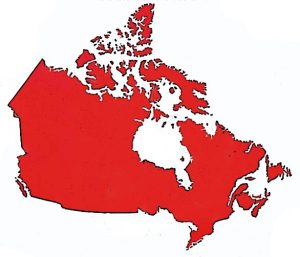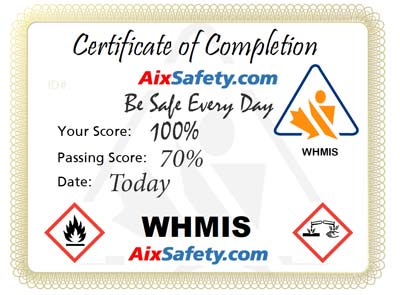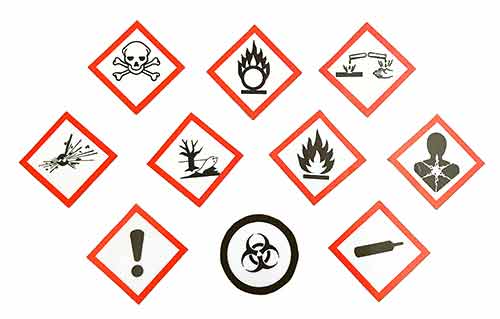7 Crucial Things You Need to Know About WHMIS
What is the meaning of WHMIS?
The WHMIS stands for “Workplace Hazardous Materials Information System.” WHMIS only applies to chemicals in the Workplace, it only applies to Hazardous Materials, and it is an Information System.
What is the purpose of WHMIS?
The purpose of WHMIS is to minimize injuries and fatalities resulting from exposure to hazardous chemicals in the workplace. There are thousands of different chemicals used in workplaces across Canada. WHMIS grants you the right to be informed about the hazardous substances you handle. Every year, thousands suffer injuries, and hundreds lose their lives due to exposure to such chemicals. Use your right to know. Familiarize yourself with the hazardous chemicals in your workplace to avoid becoming a statistic.
What are the three elements of WHMIS?
The three primary elements of WHMIS are:
1) Labels: Labels allow workers to recognize hazards.
2) Safety data sheets (SDSs): Safety data sheets enable workers to recognize the dangers in more detail and assess their risks.
3) Training: Training provides the knowledge to use and apply the information on the labels and safety data sheets to protect everyone’s health and safety.
Why was it called WHMIS 2015?
In Canada, WHMIS was harmonized with the Globally Harmonized System for Classification and Labelling of Chemicals (GHS) in 2015. This significant change made the pictograms, labels, and chemical classification requirements similar in supportive countries worldwide. In 2023, additional changes were made to the WHMIS requirements. Effective immediately, WHMIS 2015 will be referred to simply as WHMIS. Please take a look at the changes here.
Does WHMIS apply to all workplaces?
WHMIS applies to almost all workplaces in Canada. In Quebec it is known as Système d’information sur les matières dangereuses utilisées au travail, (SIMDUT).
In Ontario, WHMIS legislation applies to all workplaces except farms.
In Ontario, New Worker Health and Safety Awareness training is also required.
Do I need a WHMIS certificate in Canada?
Most jobs in Canada require a WHMIS certificate. There is both federal and provincial legislation requiring WHMIS training. Hazardous chemicals are used almost everywhere, and it is essential to know how to identify hazards and work safely with them.
Do all employees need WHMIS training?
WHMIS training is legally required for everyone in Canada who works with or in proximity to hazardous materials. In Ontario, WHMIS legislation applies to all workplaces except farms.
Examples of jobs that typically require a WHMIS Certificate include:
- Construction workers
- Factory workers
- Truck drivers
- Healthcare workers
- Food service industry workers
- Automotive professionals
- Warehouse staff
- Teachers
- Cleaning and maintenance
- Supervisors and managers
Is WHMIS training mandatory in Ontario?
If you are in Ontario, it’s crucial to ensure you have your WHMIS certificate now. From April 1, 2025, to March 31, 2026. The Ministry of Labour, Immigration, Training and Skills Development (MLITSD) will conduct focused inspections to ensure compliance with the Exposure to Chemical Agents Regulations.
Can you take WHMIS online for free?
Yes, WHMIS training is available for free at https://aixsafety.com/.
How long does the WHMIS test take?
The average time to complete the WHMIS training is 60 minutes. There is no rush, though. You can take as much time as you need and retry the quiz as often as you like.
How do I get a WHMIS certificate?
Take a training course such as the free online WHMIS course provided here.
Is there a test for WHMIS?
The WHMIS training provided by AixSafety.com has a simple quiz that is easy to understand. The quiz questions are clear and can be retaken if necessary.
How often do I need WHMIS training?
The legislation states that the WHMIS program must be reviewed annually. This does not mean everyone has to be retrained every year. A good rule of thumb is to be retrained every three years. If the hazardous products used at your workplace change or there is a change in the procedures for using, storing, or handling these products, you must be retrained on the changes.
If you change employers, the new employer will likely retrain you to ensure you are up to date with WHMIS.
Do I need WHMIS training every year?
The employer is required to review the WHMIS program annually, but workers do not need to be retrained annually. If the hazardous products used change, or if there is a change in the procedures for using, storing, or handling them, you must undergo retraining.
What are the two types of WHMIS training?
These are often described as
1) education, also referred to as generic/general WHMIS training, and
2) workplace-specific training.
The education part covers how WHMIS works, why it is essential, how chemicals can affect you, the legislation, WHMIS labels, safety data sheets and how you can apply this knowledge to protect your health and safety. The workplace-specific part covers the hazards and the specific procedures for working with, handling, storing, disposing of, or working in proximity to the hazardous materials.
How many WHMIS hazard symbols (WHMIS pictograms) are there?
The WHMIS symbols are called pictograms. Pictograms are graphic images that immediately indicate to the user of a hazardous product the type of hazard present. There are 10 WHMIS pictograms in WHMIS. Please take a look at all the pictograms.
Who enforces WHMIS requirements in Canada?
WHMIS is enforced by the Labour Branch of Human Resources Development Canada for federal workplaces and by the provincial or territorial agencies responsible for occupational health and safety for most other workplaces. For example, the Ministry of Labour, Immigration, Training and Skills Development in Ontario, the Occupational Health and Safety division in Alberta, and WorkSafeBC in British Columbia.
Which three types of products are excluded from labelling and SDS requirements under WHMIS 2015?
Several products are exempt from WHMIS because specific legislation already regulates their use, or they have been deemed non-hazardous.
A complete exemption applies to a hazardous product that is:
1. wood or a product made of wood;
2. tobacco or a tobacco product as defined in section 2 of the Tobacco Act;
3. a manufactured article
It is also exempt if a hazardous product is being transported or handled under Ontario or federal transportation of dangerous goods legislation (subsection 4(3), WHMIS Reg.).
Labels and SDS requirements do not apply, but training is still required for the following:
a. an explosive as defined in the Explosives Act (Canada);
b. a cosmetic, device, drug or food as defined in the Food and Drugs Act (Canada);
c. a pest control product as defined in the Pest Control Products Act (Canada);
d. a nuclear substance that is radioactive and defined in the Nuclear Safety and Control Act (Canada); or
e., a consumer product as defined in the Canada Consumer Product Safety Act (Canada) (subsection 4(2), WHMIS Reg.).
What are three things required on a workplace label?
1) Product Identifier
2) Safe Handling Instructions
3) Reference to the safety data sheet
Does the WHMIS cost money?
The WHMIS training at aixsafety.com is at no cost! Print out your WHMIS certificate immediately after completing it. If you would like to purchase the program and have it customized for your company, please contact us at info@aixsafety.com.
What is a Safety Data Sheet?
A Safety Data Sheet (SDS) is a comprehensive document that provides detailed information about a specific chemical or product. When using a new product or having safety concerns, consult the Safety Data Sheet (SDS) to identify hazards and learn the necessary safety measures. Manufacturers and suppliers are required to provide SDSs, and your employer must make them accessible to you. The information on a Safety Data Sheet (SDS) is essential for the safe use, storage, and disposal of hazardous substances.
Does the United States have WHMIS?
The United States has a similar system called the Hazard Communication Standard, also known as HazCom. Try the free online Hazard Communication Standard training.
We hope this article helped you learn what you need to know about WHMIS. We got carried away and covered way more than 7 things. You may also want to see and try our free WHMIS Training.
Does Europe have WHMIS?
The European Union has a similar system, known as the Classification, Labelling and Packaging (CLP) Regulation, which requires companies to classify, label, and package their chemicals before placing them on the market. These rules incorporate the Globally Harmonized System of Classification and Labelling of Chemicals (GHS).
Please refer to the information below for more details about WHMIS.
WHMIS.org – Canada’s National WHMIS Portal

